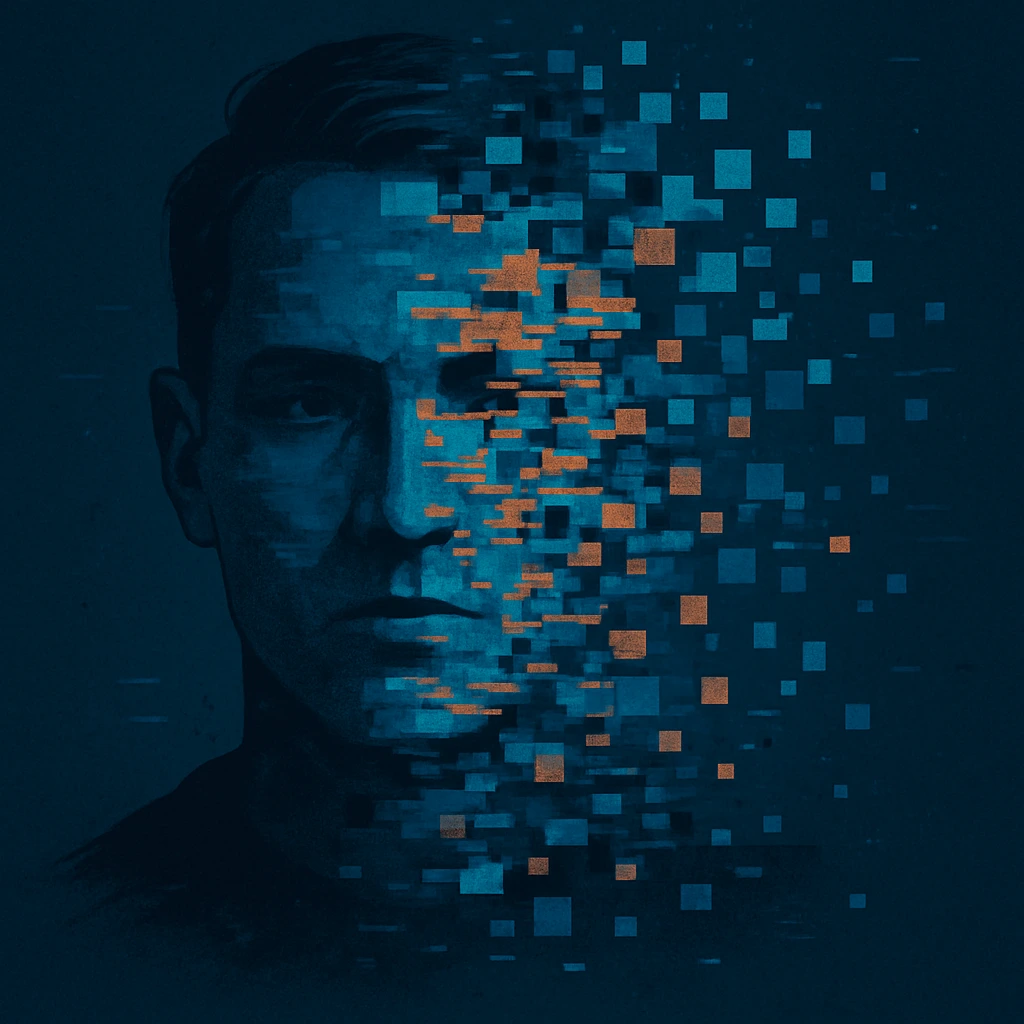Deepfakes and the Death of Truth: Navigating a World Where Seeing Isn’t Believing
By Kevin Munene Mwenda | Published on:

In an increasingly digital world, seeing was once believing. A video or an audio recording was often considered irrefutable proof. But a rapidly advancing technology is dismantling this fundamental trust: Deepfakes. These hyper-realistic synthetic media are no longer confined to sci-fi thrillers; they are a tangible and growing threat to our sense of reality, weaponizing deception in social engineering attacks and disinformation campaigns on an unprecedented scale.
What Exactly Are Deepfakes? The Art of Synthetic Reality
At its core, a deepfake is media (video, audio, or images) generated or modified using sophisticated artificial intelligence techniques, primarily "deep learning." The name itself is a blend of "deep learning" and "fake." While early deepfakes were often crude and easily detectable, the technology has advanced dramatically, producing creations that are increasingly indistinguishable from genuine content.
The magic behind deepfakes largely lies in Generative Adversarial Networks (GANs). Imagine two AI models, a "generator" and a "discriminator," locked in a perpetual game of cat and mouse:
- The Generator: Tries to create realistic fake images, videos, or audio from scratch or by altering existing ones.
- The Discriminator: Acts as a critic, trying to distinguish between real content and the generator's fakes.
Through millions of iterations, the generator learns to produce fakes so convincing that the discriminator can no longer tell the difference. Other techniques, like autoencoders, also play a significant role, learning to compress and then reconstruct data to perform highly realistic face swaps or voice mimicry. The input for these processes can be as simple as a few minutes of audio or a handful of images, used to train the AI to generate new, synthetic content that convincingly features a person speaking or acting in ways they never did.
The Erosion of Trust: When Seeing Is No Longer Believing
The increasing realism of deepfakes strikes at the very foundation of trust in digital media. If a video of a world leader saying something controversial can be easily fabricated, how can we discern truth from fiction? This erosion of trust has profound implications:
- Undermining Institutions: Trust in news organizations, government communications, and official statements can plummet if the public constantly questions their authenticity.
- Challenging Authentication: Biometric systems like facial or voice recognition could be compromised if deepfakes can convincingly impersonate individuals, opening doors for unauthorized access to sensitive systems and data.
- Creating Chaos: In critical moments, such as elections or crises, a well-placed deepfake could sow confusion, incite panic, or manipulate public opinion, making it difficult for people to make informed decisions.
Weaponizing Deception: Deepfakes in Social Engineering Attacks
Deepfakes provide an unparalleled tool for enhancing social engineering attacks, which exploit human psychology to manipulate victims:
- Voice Cloning for "CEO Fraud": Imagine receiving a phone call that sounds exactly like your CEO, urgently instructing you to transfer a large sum of money to a new account. With voice cloning technology, this is already a reality. For instance, a 2019 case in the UK involved cybercriminals using AI-generated voice to trick a company into transferring $243,000.
- Video Deepfakes for Impersonation: Beyond voice, video deepfakes can impersonate colleagues, IT support, or even family members. A deepfake video call from a trusted individual could convincingly request credentials or urgent actions, potentially bypassing multi-factor authentication.
- Enhanced Phishing and Vishing: Deepfakes elevate phishing (email-based) and vishing (voice-based) attacks by adding visual and auditory authenticity. A deepfake video from a seemingly legitimate source could contain a malicious link or fraudulent request.
- Targeted Blackmail and Extortion: Deepfakes can fabricate compromising situations that never actually occurred, damaging reputations and enabling blackmail, coercion, or extortion.
The Disinformation Engine: Deepfakes in the Information War
Beyond individual attacks, deepfakes are potent weapons in broader disinformation campaigns:
- Political Manipulation: Deepfakes can fabricate speeches, endorsements, or offensive remarks from political figures, potentially altering election outcomes before the truth is uncovered.
- Propaganda and Narrative Control: Adversarial state actors or extremist groups can use deepfakes to spread fear, legitimize illegal actions, or create false narratives that serve their agendas.
- Undermining Journalistic Integrity: News outlets that unknowingly share deepfakes risk damaging their credibility, making it harder for the public to trust any source.
- Sowing Social Discord: Fabricated statements or events attributed to specific groups can inflame tensions and potentially lead to real-world violence or unrest.
The Accessibility Paradox: A Threat Multiplied
What makes the deepfake threat particularly insidious is its increasing accessibility:
- User-Friendly Tools: Open-source frameworks, online platforms, and mobile apps lower the barrier to entry for creating convincing deepfakes.
- Reduced Resource Requirements: Algorithms are becoming more efficient, and cloud computing services provide the necessary processing power to anyone with internet access.
- Abundant Training Data: Publicly available media on social platforms provides ample training data for malicious actors.
As deepfake tools become more accessible, even individuals with limited technical skills can create convincing synthetic media.
Fighting Back: Countermeasures and a Call to Awareness
Combating the deepfake threat requires a multi-faceted approach:
- Technological Detection: AI-powered detection systems analyze subtle artifacts left by deepfake generators, such as facial inconsistencies or audio anomalies. Tools like digital watermarking and content provenance are also being developed to trace media origin. This is an ongoing arms race, as deepfake techniques continue to evolve.
- Media Literacy and Critical Thinking: Individuals must be educated to evaluate digital content critically, verify sources, and remain skeptical of unexpected or sensational media.
- Platform Accountability: Social media companies must implement robust detection systems, remove malicious content swiftly, and label synthetic media clearly.
- Legal and Regulatory Frameworks: Governments are starting to legislate against the malicious creation and distribution of deepfakes, especially in cases of fraud, defamation, or political interference.
- Human Verification: In high-stakes scenarios, traditional verification methods, such as direct communication through secure channels, can act as crucial safeguards.
Ethical Use Cases: The Other Side of the Coin
While deepfakes pose clear dangers, it's worth noting legitimate applications:
- Entertainment: Filmmakers use deepfake tech to de-age actors or recreate historical figures.
- Accessibility: Voice cloning and synthetic avatars can help those with speech impairments or ALS communicate more easily.
- Education and Training: Deepfakes can simulate realistic scenarios for medical training or customer service roleplay.
Understanding both the risks and the potential benefits helps inform more balanced policies and public perception.
Conclusion: Navigating a Blurry Reality
Deepfake technology represents a profound challenge to our collective trust in digital information. Its increasing realism and accessibility empower more sophisticated social engineering attacks and fuel dangerous disinformation campaigns, blurring the lines between reality and fabrication. As this technology continues to evolve, the responsibility falls on all of us – individuals, cybersecurity professionals, technology developers, and policymakers – to adapt. By fostering a culture of healthy skepticism, developing robust detection methods, and implementing appropriate regulations, we can work towards a future where trust, though tested, can still be earned, and where the truth, however inconvenient, can still prevail.
